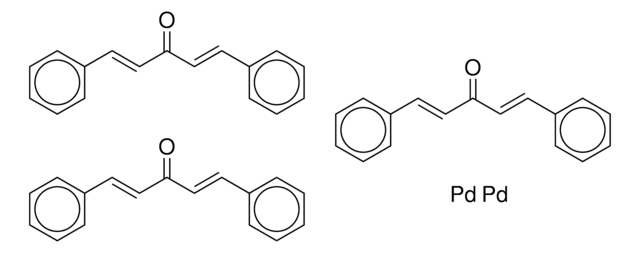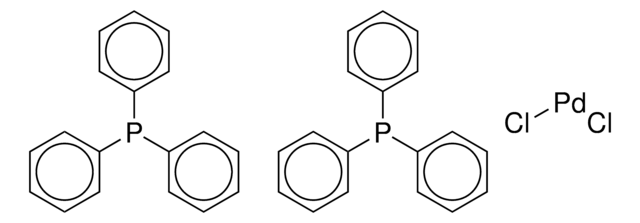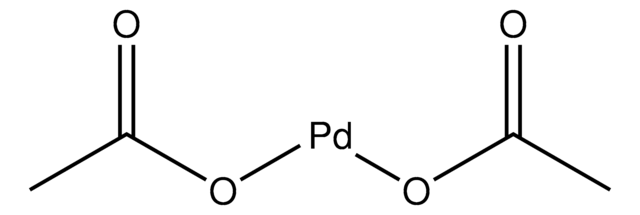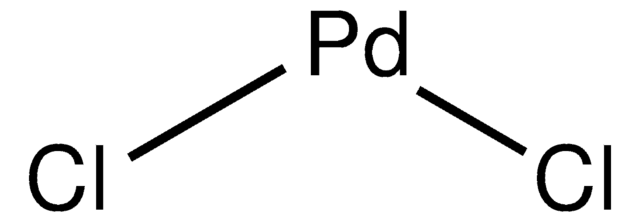919853
Palladium(II) chloride ChemBeads
About This Item
Productos recomendados
formulario
solid
Nivel de calidad
composición
~ 4 wt.% loading of catalyst
idoneidad de la reacción
reagent type: catalyst
reaction type: Cross Couplings
cadena SMILES
Cl[Pd]Cl
InChI
1S/2ClH.Pd/h2*1H;/q;;+2/p-2
Clave InChI
PIBWKRNGBLPSSY-UHFFFAOYSA-L
Descripción general
Aplicación
Used in the synthesis of semiconducting metal-containing polymers in which the polypyrrole backbone has a conformational energy minimum and is nearly planar.
- As catalyst for the carbonylation of organic tellurides by reaction with carbon monoxide.
- As a catalyst along with Cu(II) for the deamination of phenethylamines to phenyl substituted pyrroles.
- Together with PEG 300, promoted efficient Suzuki-coupling of aryl chlorides with aryl boronic acids.
ChemBeads are chemical coated glass beads. ChemBeads offer improved flowability and chemical uniformity perfect for automated solid dispensing and high-throughput experimentation. The method of creating ChemBeads uses no other chemicals or surfactants allowing the user to accurately dispense sub-milligram amounts of chemical.
Learn more about ChemBeads products
For larger scale uses, product also available in powdered form (205885) & (520659)
Otras notas
Versatile Methods to Dispense Sub-Milligram Quantities of Solids using Chemical Coated Beads for High-Throughput Experimentation
ChemBead Enabled High-Throughput Cross-Electrophile Coupling Reveals a New Complementary Ligand
Producto relacionado
Palabra de señalización
Danger
Frases de peligro
Consejos de prudencia
Clasificaciones de peligro
Aquatic Acute 1 - Aquatic Chronic 1 - Carc. 1B Inhalation - Eye Dam. 1 - Met. Corr. 1 - Skin Sens. 1
Código de clase de almacenamiento
6.1C - Combustible acute toxic Cat.3 / toxic compounds or compounds which causing chronic effects
Clase de riesgo para el agua (WGK)
WGK 3
Elija entre una de las versiones más recientes:
Certificados de análisis (COA)
¿No ve la versión correcta?
Si necesita una versión concreta, puede buscar un certificado específico por el número de lote.
¿Ya tiene este producto?
Encuentre la documentación para los productos que ha comprado recientemente en la Biblioteca de documentos.
Artículos
ChemBeads, catalyst-coated glass beads, offer a simple and cost-efficient solution for dispensing miniscule amounts of solid chemical reagents for nanomole-scale use in high-throughput reaction screening.
Nuestro equipo de científicos tiene experiencia en todas las áreas de investigación: Ciencias de la vida, Ciencia de los materiales, Síntesis química, Cromatografía, Analítica y muchas otras.
Póngase en contacto con el Servicio técnico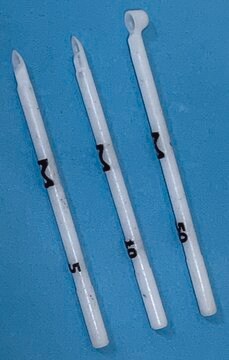
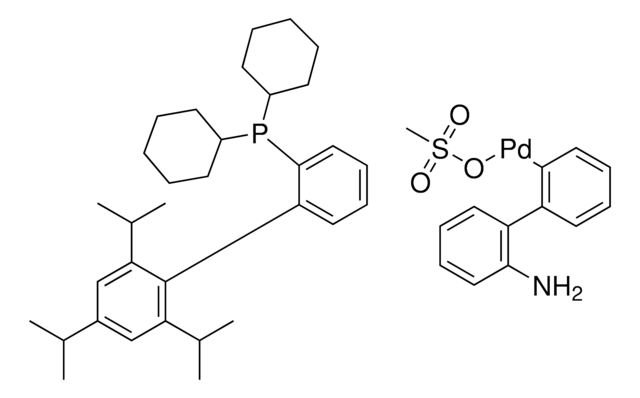
![[1,1′-Bis(diphenylphosphino)ferrocene]dichloropalladium(II) ChemBeads](/deepweb/assets/sigmaaldrich/product/structures/276/683/e8a8b162-1e17-467b-8eb6-f4180a60a1b9/640/e8a8b162-1e17-467b-8eb6-f4180a60a1b9.png)
